DOOM multiplayer impressions: Back from the dead, or dead on arrival?
DOOM multiplayer beta is over, and I feel like I've spent more time with it than any other test of this type.
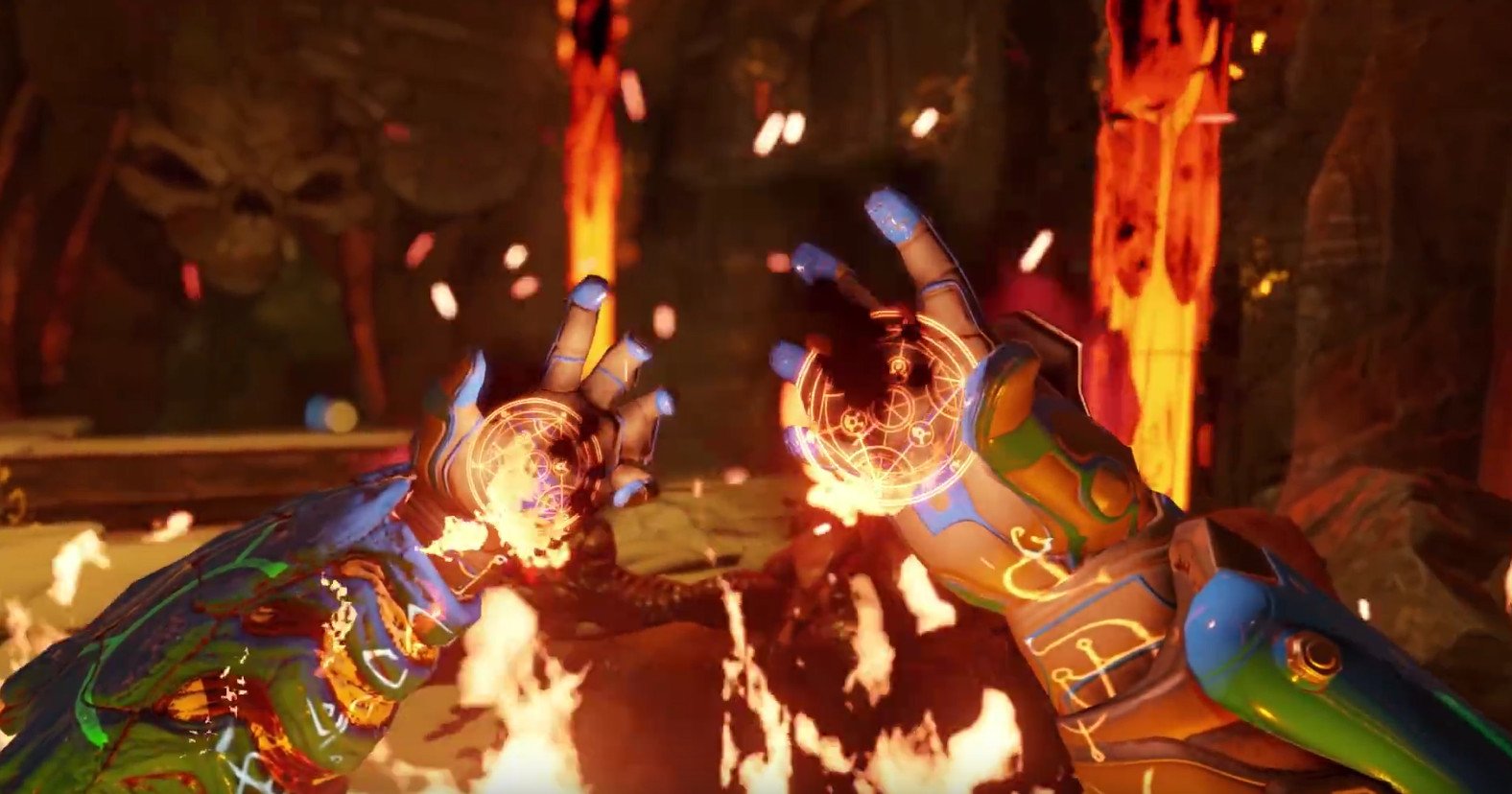
When I first saw the DOOM reboot trailers, I had mixed feelings. I quite adored DOOM 3, with its shift to atmospheric first-person survival horror, but the reviews were certainly mixed. I recall some decrying the relatively slow pacing and over-reliance on "Monster Closet" jump scares, and there's every chance id Software had that in mind when developing this all-new, action-packed reboot.
For Bethesda's DOOM, id Software appears to have gone back to basics, delivering an in-your-face action FPS that emulates the speed of the original games while ramping up the violence that gave the series its notoriety.
Just like DOOM's campaign mode, DOOM's multiplayer attempts to strip away some of the pomp of modern FPS, opting for an experience that channels the golden age of arena combat. Not only am I a long-serving DOOM fan, but I spent insane amounts of time inside those classic arena shooters that this reboot is trying to imitate. Quake and Unreal Tournament emerge from the piles of entrails strewn on DOOM's blood-spattered battlegrounds, but so too does Halo, and Call of Duty — and I'm unsure whether the latter two are unwelcome guests or necessary evils.
While a little rough around the edges (and, that's what beta tests are for right?) DOOM multiplayer seems like it might be decent enough to shrug off accusations of being 'tacked-on', but I think it's premature to say that DOOM has truly returned from the dead.
Violent vistas
Audio and Visuals
We've seen the various bloody gameplay trailers, but how does DOOM stack up in practice? DOOM utilizes dynamic scaling to hover around 1080p on Xbox One, dropping pixels to maintain frame rate when the action gets too intense. The frame rate is a rock solid 60 FPS, and while I lack any empirical way of testing this, across dozens of hours of playtesting during the beta period, I didn't discover a single instance of decreased stability. Even while blasting groups of players into sinewy chunks with the game's various power weapons, DOOM stayed true to form.
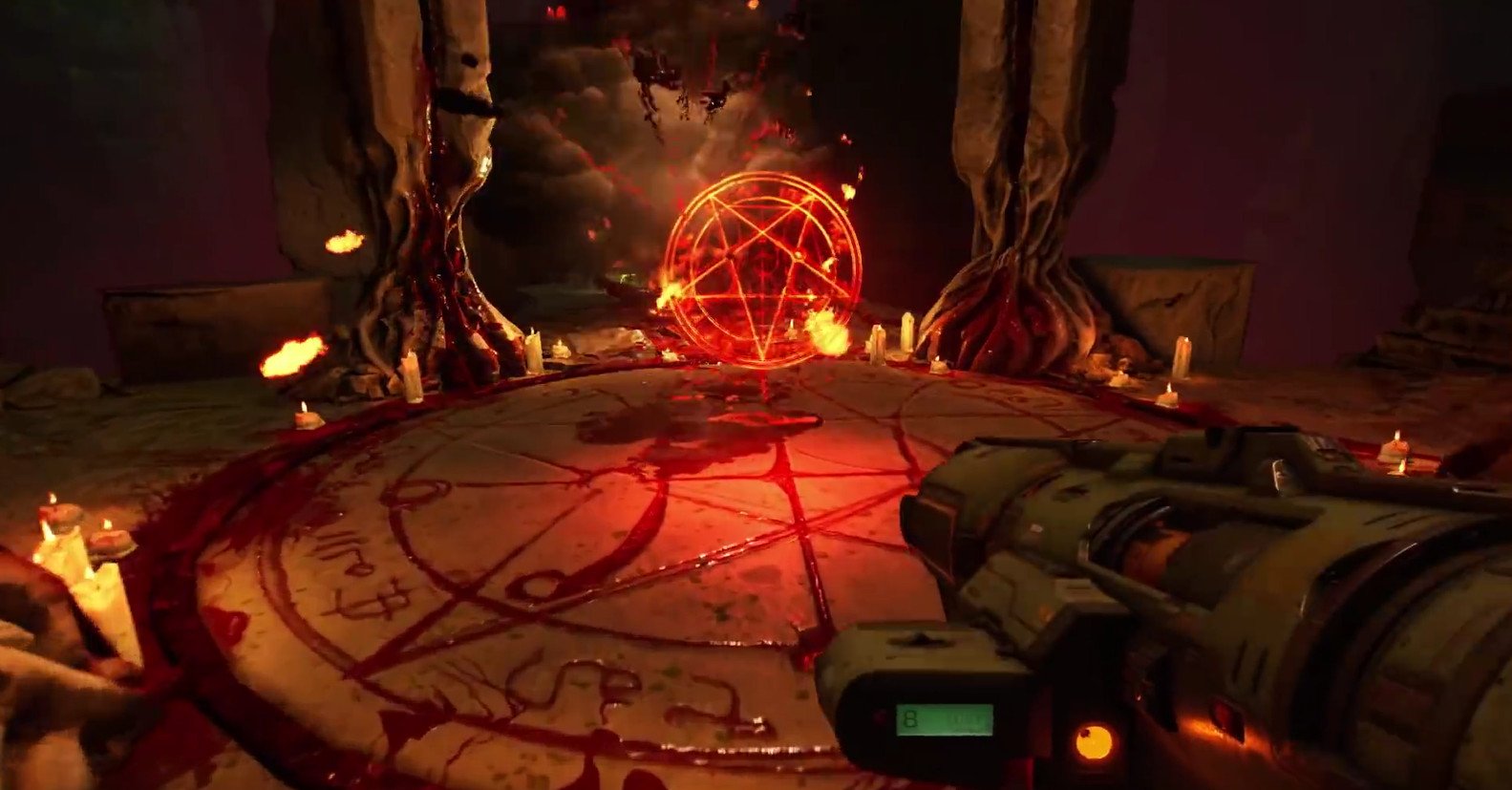
DOOM introduces the game with a pounding industrial metal track penned by Mick Gordon (Killer Instinct, Wolfenstein: The New Order), and his punishing style is a great fit to usher in a new era for the hellish shooter.
All the latest news, reviews, and guides for Windows and Xbox diehards.
The maps available in beta had decent layouts, with winding paths, plenty of platforming opportunities and tactical features, but art-wise, none was particularly extraordinary. Your every day blood flows, stone walls, sci-fi facilities, lava pools, heretical runes — standard demonic fare. The art direction hasn't been especially interesting thus far, a jaunt through the depths of Hell should never feel this pedestrian. This fact that stands especially prominent given the recent launch of the thoroughly nightmarish, and relentlessly creative Dark Souls III.
A jaunt through the depths of Hell should never feel this pedestrian.
I'm hoping we'll see something a little more imaginative in the full game, though, perhaps id Software felt reluctant to step too far out of bounds when it came to the game's art direction. DOOM has a legacy to uphold, as one of the titles credited with the inception of first person shooters. Some of DOOM's long time fans have responded negatively to reboot's art direction, even going as far as providing updated designs that more closely match the original color palettes.
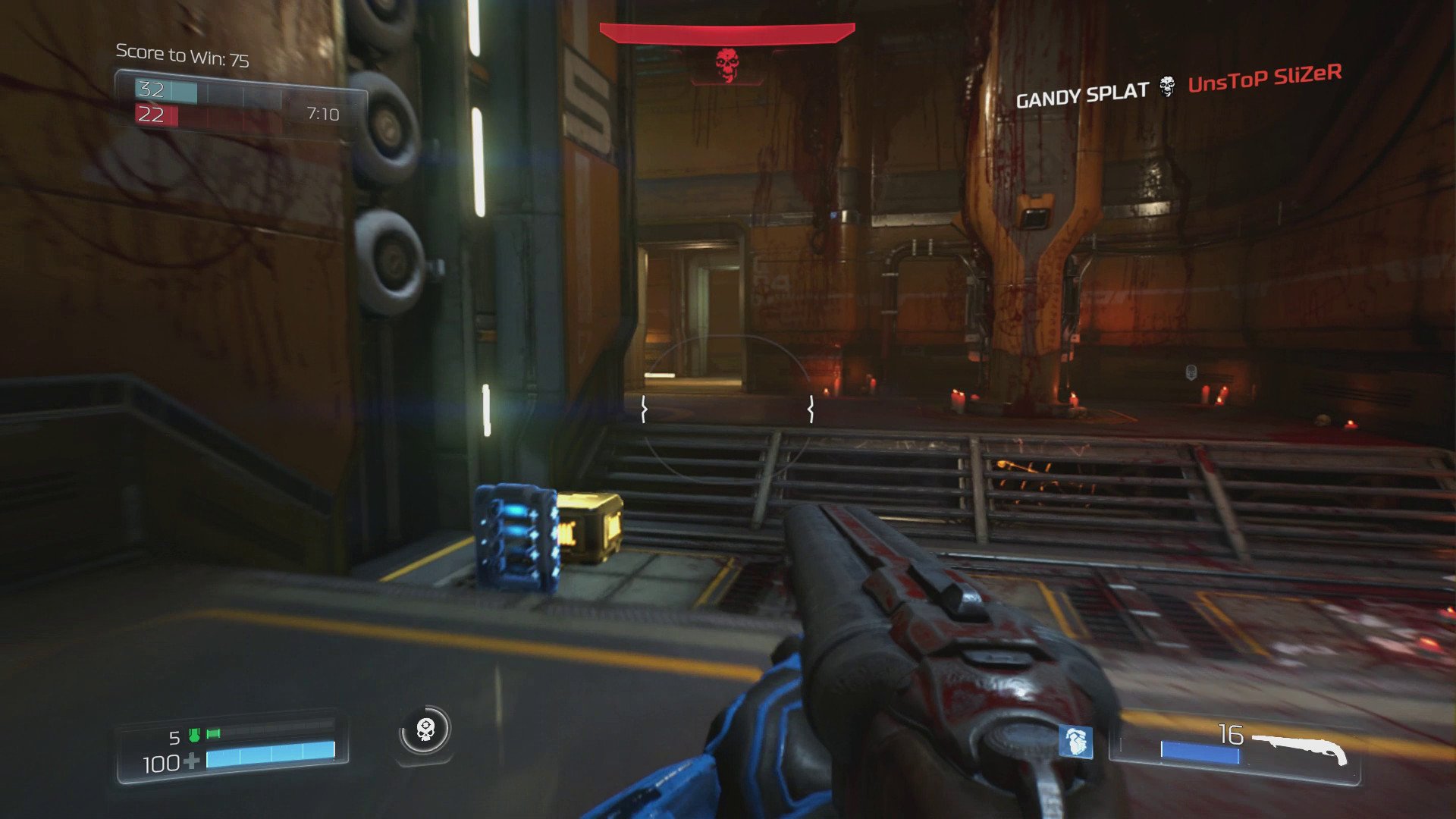
Admittedly, multiplayer isn't a great way to judge visual designs. Online play prioritizes performance over portrayal, and the speed of DOOM's combat means you'll rarely be stopping to soak in the infernal scenery. id Software knows where your eyes will find their focus amidst the carnage. When it comes to exploding space marines, pulsating energy weapons and those impossibly satisfying execution animations — as a virtual slaughterhouse, DOOM delivers big.
DOOM's multiplayer beta only offered a glimpse at the horror the full game will provide. So far, there's plenty to praise, but I feel like the depths of hell could be a little less inviting.
Resurrected, or the walking dead?
Multiplayer Gameplay
Having missed out on the multiplayer of previous DOOM games, I went into the reboot with a blank slate. Classic arena shooters like Quake and Unreal Tournament were staples of my youth.
In the age of Call of Duty dominance, going all-in with the controllable chaos of an old-school arena shooter would've been a risky bet for an AAA budget. The danger is, of course, that by trying to appeal to both the old-school crowd while chasing the Call of Duty millennial, you'd end up pleasing nobody. Judging from the game's Steam reviews, it certainly seems to be falling on the wrong side of that balance. I had no hands-on time with the PC version, but the primary complaints pertain to it feeling sluggish compared to previous DOOM games, the way most weapons are now XP unlockables for pre-match equipment load outs, and the odd twinge of Halo that accentuates the experience.
The scripted melee executions, the grenade gameplay, the floaty, low-gravity feel, space marines dancing — there's a lot about DOOM that evokes Halo. I wrote that in my notes before discovering that the multiplayer was developed by Certain Affinity, a company comprised of former Bungie employees, who, indeed, worked on previous Halo titles.
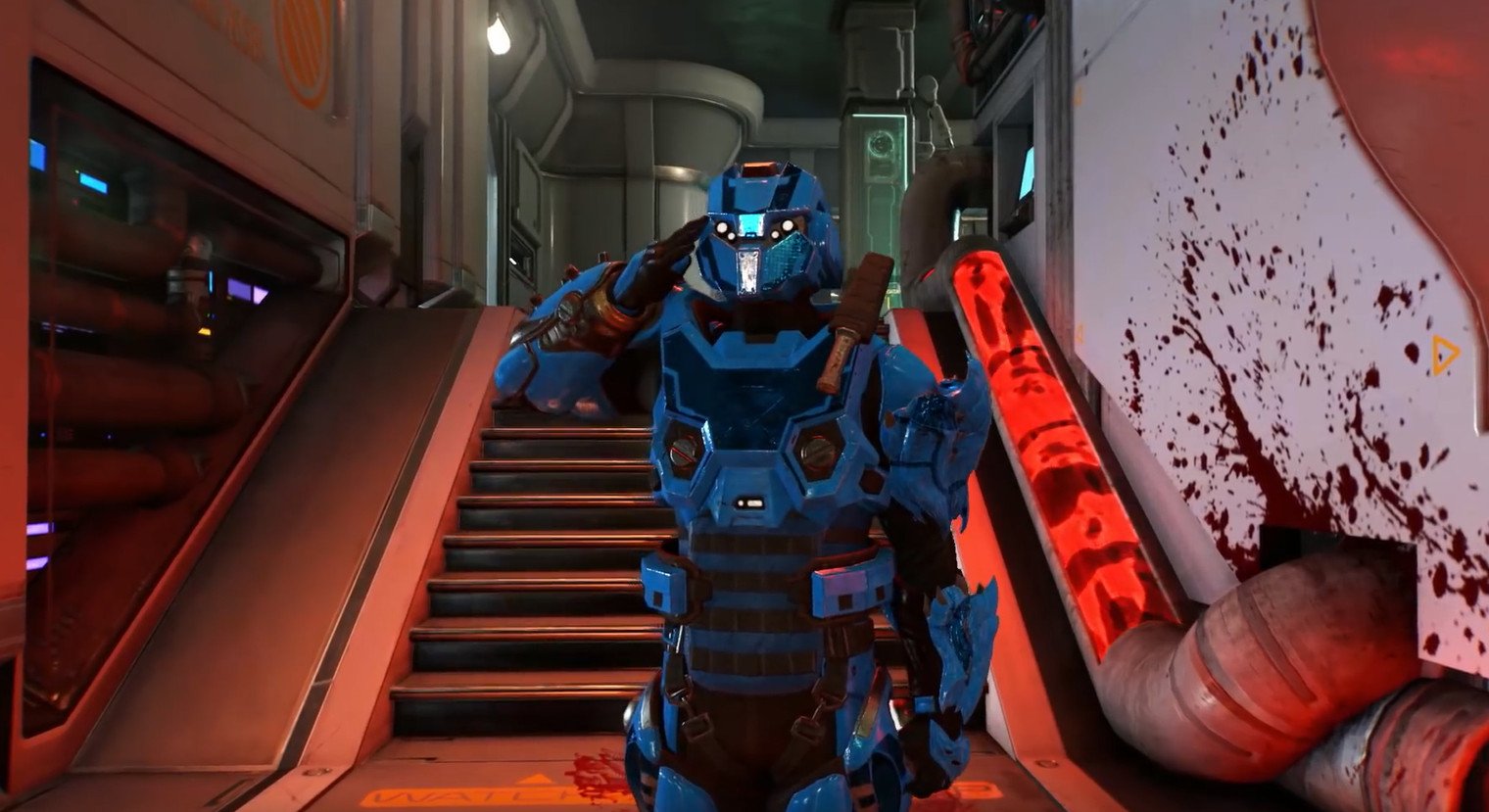
For better or worse, bringing in former Halo developers whose franchise took multiplayer FPS from the occasional LAN party and gave it to the online masses should be a safe bet for building a solid competitive shooter. But, while I enjoyed my time with the beta, DOOM would need a lot of work to compete with today's heavy hitters.
I wasn't able to unlock the full arsenal of weaponry that'll be available in the finished product, but the guns on offer felt solid and diverse, for the most part. It might've been symptomatic of the claustrophobic maps Bethesda chose for the test, but the super shotgun felt a little overpowered.
DOOM's old-school elements are compromised to accommodate the 'modernized' mechanics.
None of the other standard weapons could touch the shotgun for time-to-kill, and any attempt to go toe-to-toe against someone wielding it, using anything less than power weapons, was pure, crushing folly. The full game will hopefully feature maps that allow longer range weapons like the assault rifle or the lightning gun to shine a little more, but the maps offered in beta were all about the super shotgun. At least, until players transformed into a demon — more on that later.
The DOOM reboot, sporting CoD-like unlocks as a reward for continued play results in their removal from the battlefield. In classic arena shooters, developing a sixth sense for weapon and power-up respawn timers contributed to the overall skill curve.
I learned DM-Deck 16 in UT99 so well, across hundreds of hours, that I could zip around the map in a set path, lining up my dodges and movements to grab the best weapons and power-ups like it was second nature, deviating only for dynamic events that result from emergent, rewarding PvP chaos. DOOM's old-school elements are compromised to accommodate the 'modernized' mechanics.
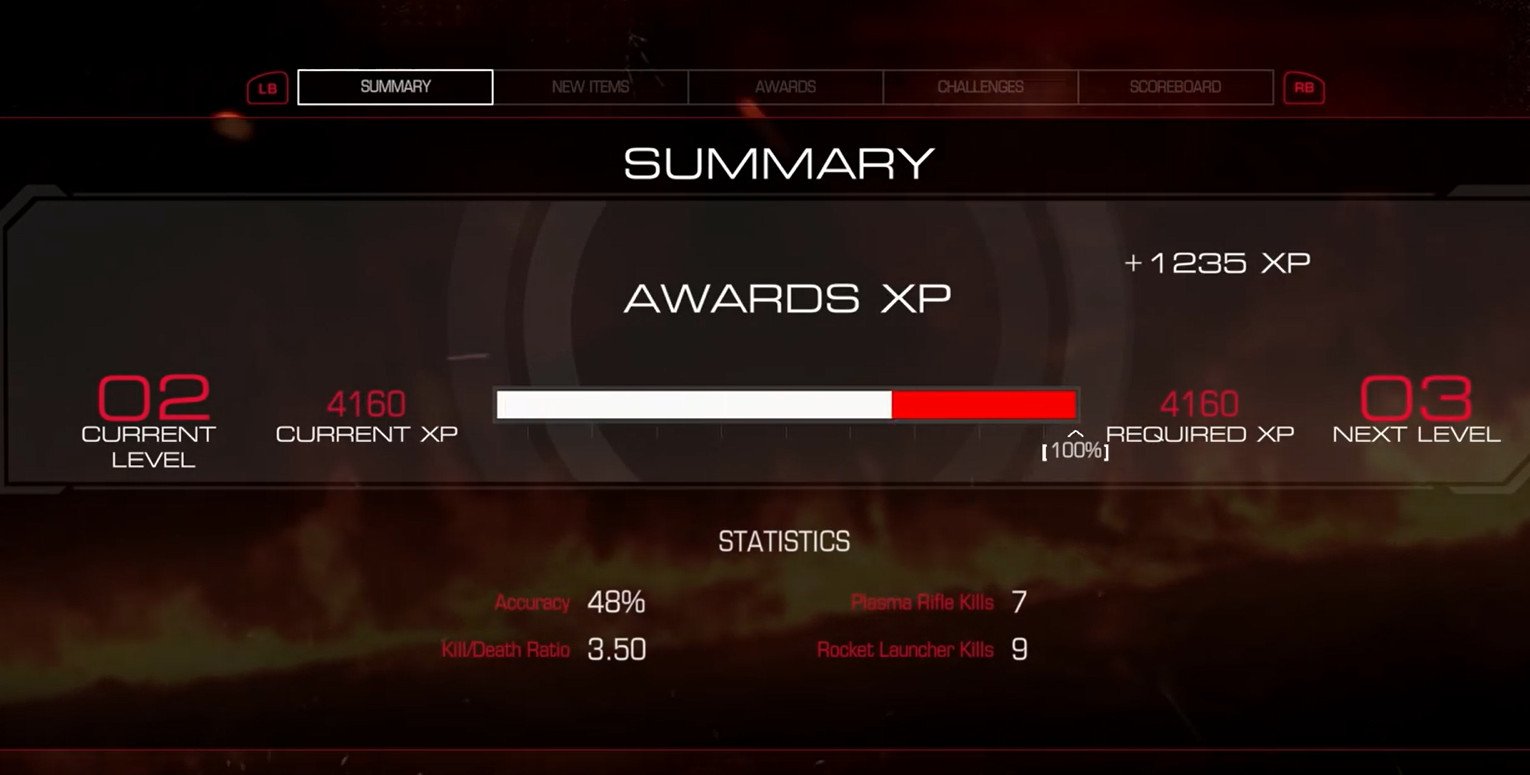
That 'modernization' is a double-edged chainsaw. As usual, having load outs, XP unlocks and the like, should make the game more appealing to the mass market crowd Bethesda are obviously chasing for this reboot, but they homogenize the weaponry something rotten. The rocket launcher, now a standard weapon rather than a map spawn, does comparable damage to every other standard weapon — albeit with slow rocket travel speeds. Despite the odd occasion where splash damage might help your team, why would you ever use this over the shotgun, that deals near identical damage, instantly, without the risk of hurting yourself in the explosion? The maps on offer didn't make compelling arguments for using anything besides the super shotgun, but if the weapons all deal similar damage, yet lack viability due to map design and so on, it takes away one of the things that made classic arena shooters so great.
DOOM is clearly aware of what makes arena shooters great, which is why the game still features classic arena health packs, ammo crates, armor, power ups and power weapons as map picks ups. As someone who hasn't had a gaming PC for years, I felt nostalgic as I worked my way around the maps, grabbing armor boosts, uncovering power weapons and so on, but they were on such short respawn timers it felt a little trivial. Not only that but the maps just seemed plain small. I felt myself yearning for hidden paths and secret rooms — basic features that made DOOM and other classic arena shooters all the more rewarding for well-learned players.
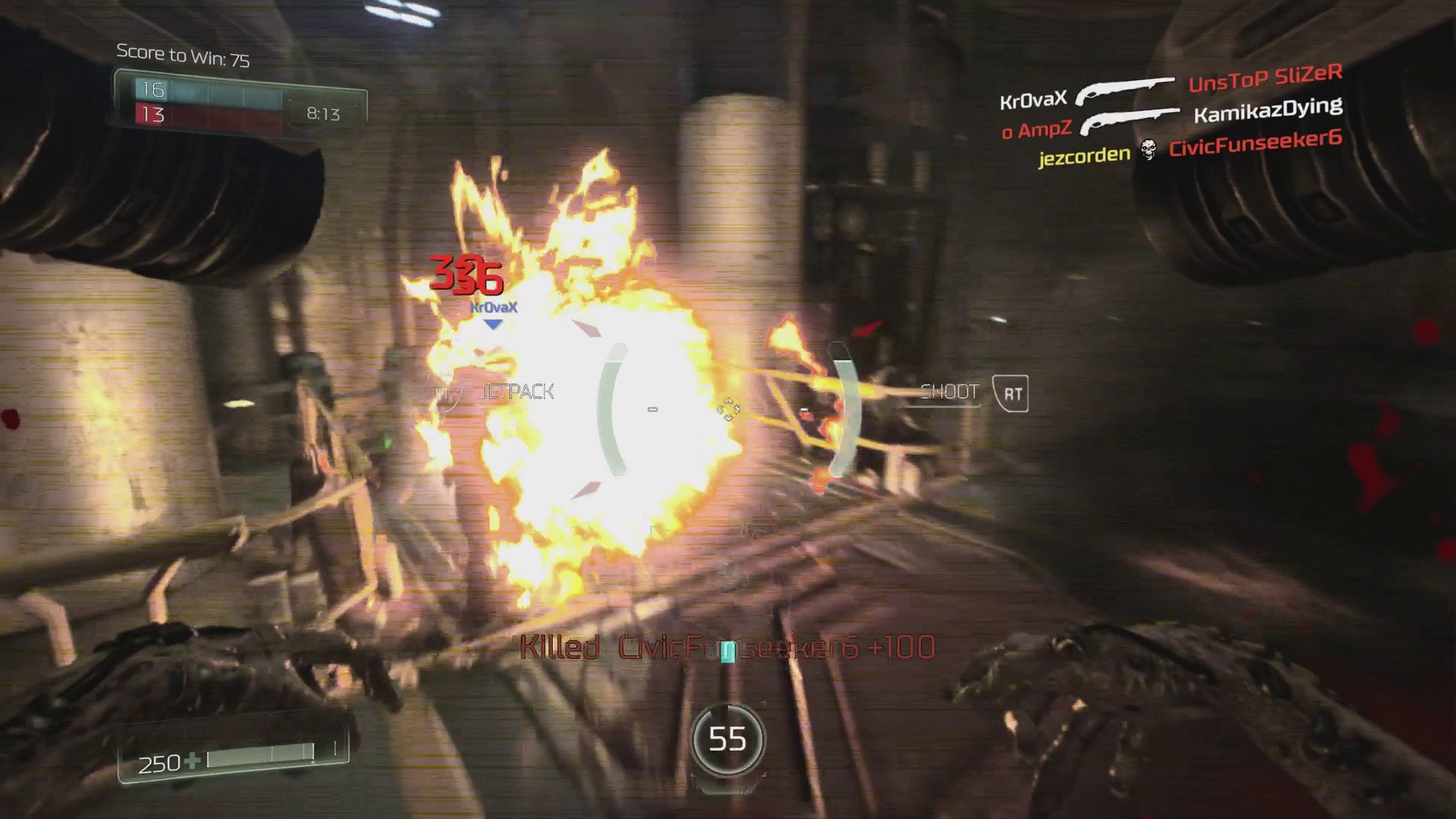
That's the thing about DOOM multiplayer; it appears like it wants to be an arena shooter, leaning on the legacy of its name, but it's designed to do so only at face value. No regenerating health — but med kits are abundant and respawn rapidly. The maps have weapon pickups — but only power weapons that grant cheap, easy kills, and are available in plain view. Lots of those classic weapons are there — but they're tuned to be earned as loadout unlocks, resulting in weapons like the rocket launcher feeling totally neutered. A direct rocket to the face should always result in a fountain of gore.
id Software missed the opportunity to bring in some aspects of modern shooters that would boost the game, like Halo 5's directional dodge in place of the combat-ineffective double jump, and sprinting, of all things. For all their posturing at last year's reveal, DOOM still feels sluggish compared to some modern multiplayer shooters, like Titanfall.
Those are the negatives, though. Despite my complaints, despite the litany of minor frustrations, when DOOM does things well, it does them very well.
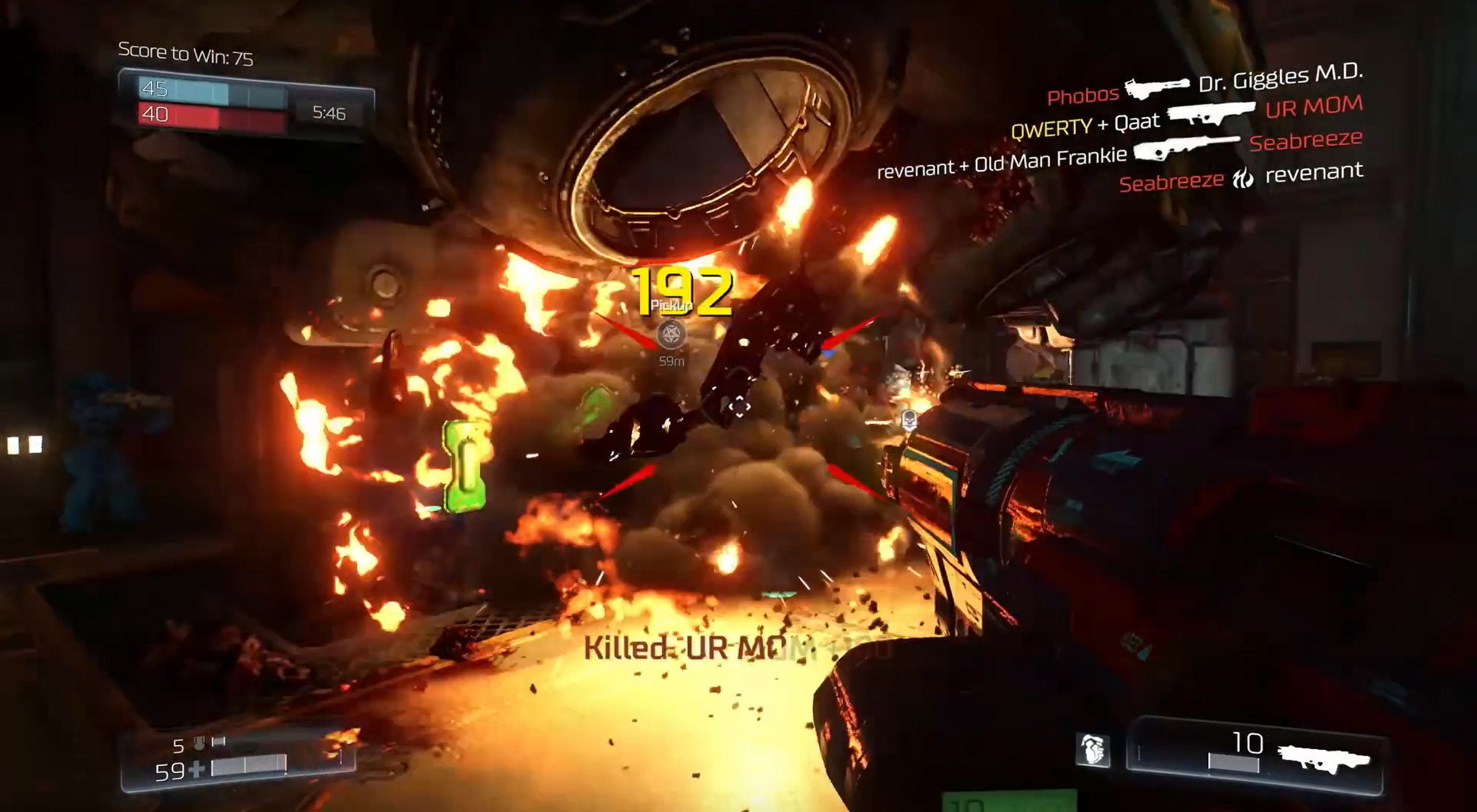
Doubtless due to Certain Affinity's Halo influence, DOOM multiplayer is a melee-heavy game. When hitting a player in the face with a shotgun, followed by a quick melee attack was often enough to strip an unarmored player of health, and those kills resulted in gloriously humiliating execution sequences. Finding victory in a close quarters duel, reducing your opponent to a violent shower of meaty chunks feels and sounds incredible, appealing to my most shallow sensibilities. And of course, there are those demonic runes.
DOOM's signature "don't-call-it-a-gimmick" multiplayer feature is the ability to turn into one of the franchise's staple demons, and wreak havoc for a whole minute, or until you're killed. Picking up a demonic rune, which spawns randomly on the map, will result in a brief animation before providing you with insanely powerful weapons, abilities, and speed for a stint of guaranteed goregasmic kills. It's a mechanic that allows even the least skilled players to achieve greatness, emulating Destiny's super attacks, Call of Duty's flanking respawn system or Battlefront's hero pick-ups.
That's the thing, despite those betrayed expectations, I had more fun in DOOM's brief beta than I've had in a multiplayer shooter for a long time. If Bethesda can take some of the criticisms on board, like its demonic transformations, DOOM could evolve into something far greater than its beta has led many fans to believe it can be.
On the brink of DOOM
Final Thoughts
It might seem premature to judge the future of a studio based on a limited beta test, but DOOM, as a reboot, just cannot afford to be complacent. Bethesda has restarted this project once already, as they felt dissatisfied with id Software's initial work on the now-cancelled DOOM 4.
Bethesda has enjoyed mixed success as a publisher, and id Software itself hasn't had a major hit in quite a while. Their last major effort, RAGE, shipped riddled with bugs atop repetitive gameplay wrapped in an uninspired setting — leading to the sequel being canceled.
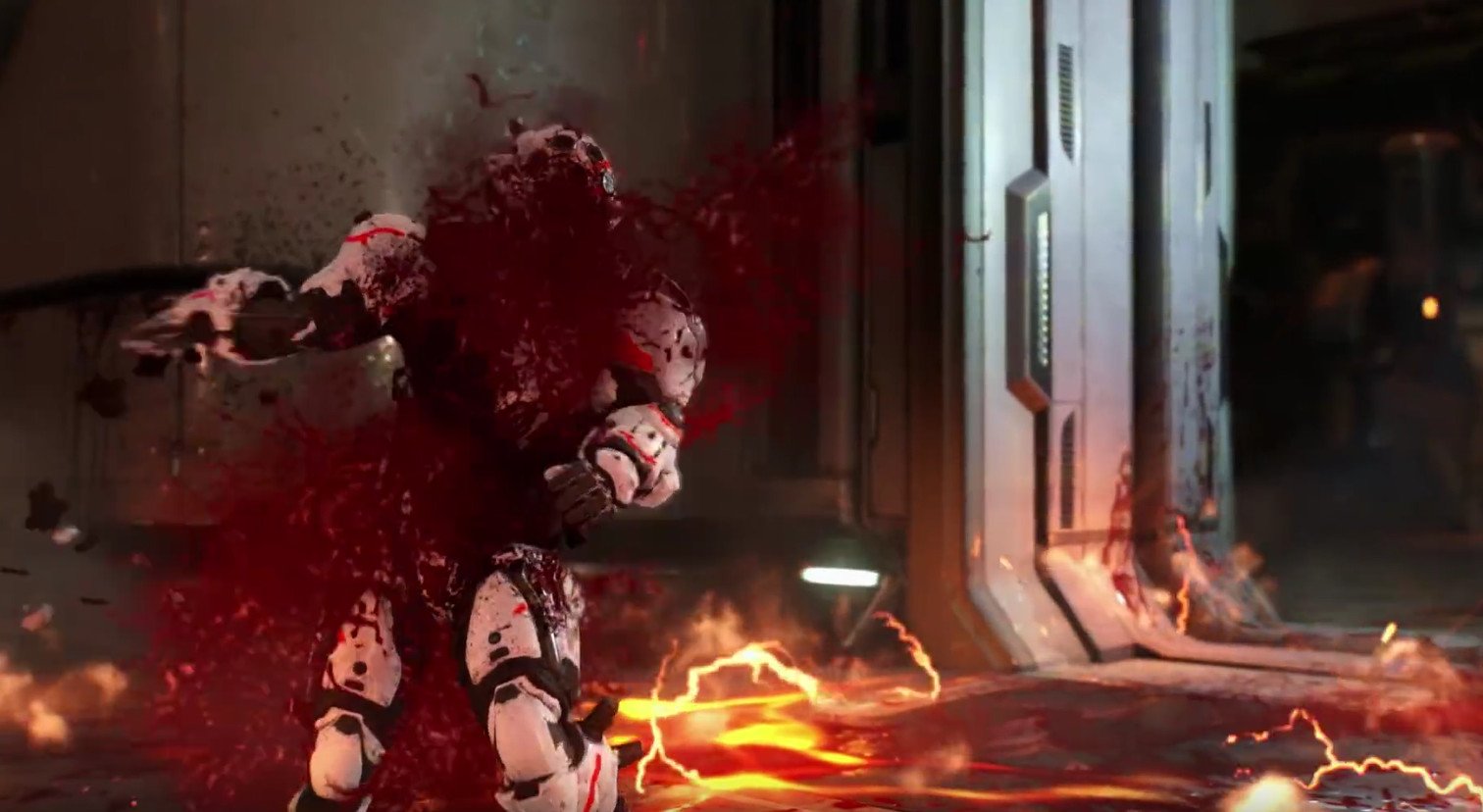
With the departure of id Software co-founder John Carmack, who fled to Oculus Rift back in 2013, it's perhaps depressingly ironic that the failure of a game named DOOM could spell the end of id Software's legendary story. I'm not sure whether Bethesda would be willing to continue pouring money into id Software if RAGE's fate befalls DOOM, and the studio appears to have created a lot of bad will among long-time fans already with its casualized take on the franchise's classic formula. Alienating DOOM's fanbase to chase the mass market gamer is a risky strategy in such a violently competitive multiplayer climate.
I'm not sure this version of DOOM's multiplayer will be good enough to bank on its name alone.
As fun as I found it, I'm not sure this version of DOOM's multiplayer will be good enough to bank on its name alone. Online shooters like Rainbow Six Siege and Halo 5 have dropped paid map packs as they split the player base depending on who owns what, and for DOOM to plow ahead with that model is just one item in a list of problems that scream of corporate complacency.
It makes me worried that the campaign could be similarly unambitious and haphazard. It also makes me worried that the multiplayer might not see the support it needs to enjoy any sort of longevity.
Of course, there is hope among the doom and gloom. Bethesda just needs to respond to some of the impassioned feedback. With a few easy tweaks and some simple communication, not only could the franchise make a riotous return to the top of the pile, but it'll save id Software from sinking into the depths.

Jez Corden is the Executive Editor at Windows Central, focusing primarily on all things Xbox and gaming. Jez is known for breaking exclusive news and analysis as relates to the Microsoft ecosystem while being powered by tea. Follow on Twitter (X) and tune in to the XB2 Podcast, all about, you guessed it, Xbox!
